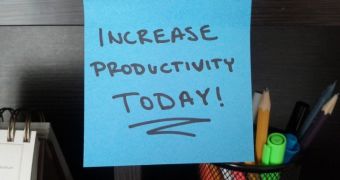Every once in a while, scientists cough out bits and pieces of information that can actually help make our lives more bearable and easier to deal with.
Long story short, it is researchers at UC San Diego and Columbia University whom we should thank for a brand-new and perfectly sound explanation (“excuse” might be the better word here) for low productivity while at work.
In a recent paper, these specialists argue that, according to their investigations into the matter at hand, exposure to a certain air pollutant can make people bad at their job, especially if one happens to work as a pear packer. The Washington Post details that the pollutant in question is fine particulate matter, otherwise known as PM2.5, i.e. airborne particles that measure less than 2.5 micrometers in diameter.
The UC San Diego and Columbia University scientists explain that, because of their size, these particles can easily enter buildings. Once there, they do not break down, but simply float about in the air.
“Unlike other pollutants, which either remain outside or rapidly break down once indoors, going inside may do little to reduce one’s exposure to PM2.5,” the researchers say.
In a study focusing on workers employed at an indoor pear packing company in northern California, the specialists found that, for every 10-microgram per cubic meter increase in fine particulate matter air concentrations in the region, productivity dropped by 0.6%.
Since the workers at this factory were paid depending on the number of pear boxes that they managed to pack, this meant that exposure to a 10-microgram per cubic meter level of fine particulate matter cost them $0.41 per hour.
Exposure to concentrations of 15-20 micrograms, 20-25 micrograms, and over 25 micrograms were linked to hourly losses of $0.53, $1.03, and $1.88, respectively.
“We find that an increase in PM2.5 outdoors leads to a statistically and economically significant decrease in packaging speeds inside the factory, with effects arising at levels well below current air quality standards,” the researchers write in their paper.
Furthermore, “In contrast, we find little effect of PM2.5 on hours worked or the decision to work, and little effect of pollutants that do not travel indoors, such ozone. This effect of outdoor pollution on the productivity of indoor workers suggests a thus far overlooked consequence of pollution.”
The researchers now wish to carry out future investigations and hope to determine whether air pollution also influences the productivity of people who work in retail or offices.

 14 DAY TRIAL //
14 DAY TRIAL //